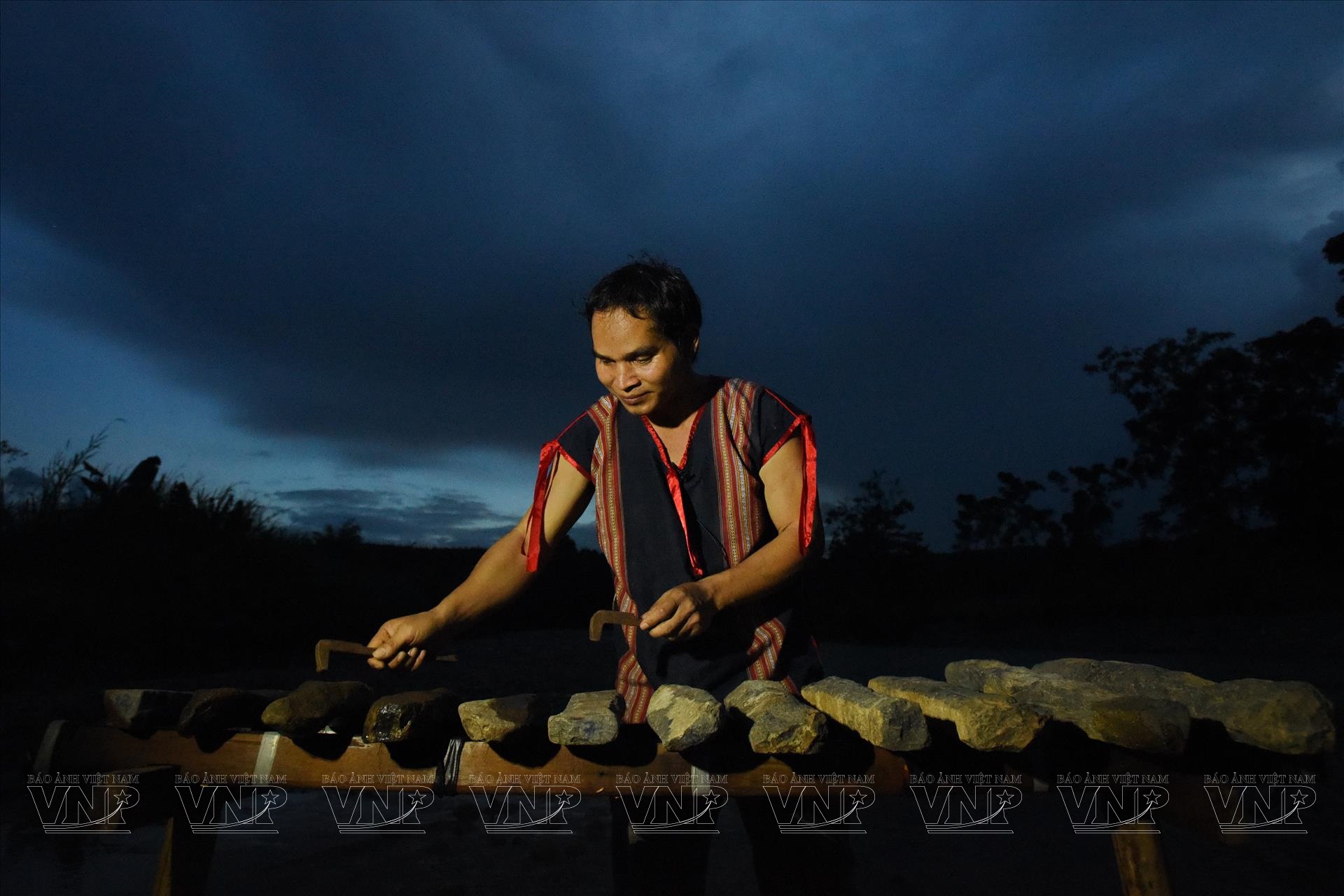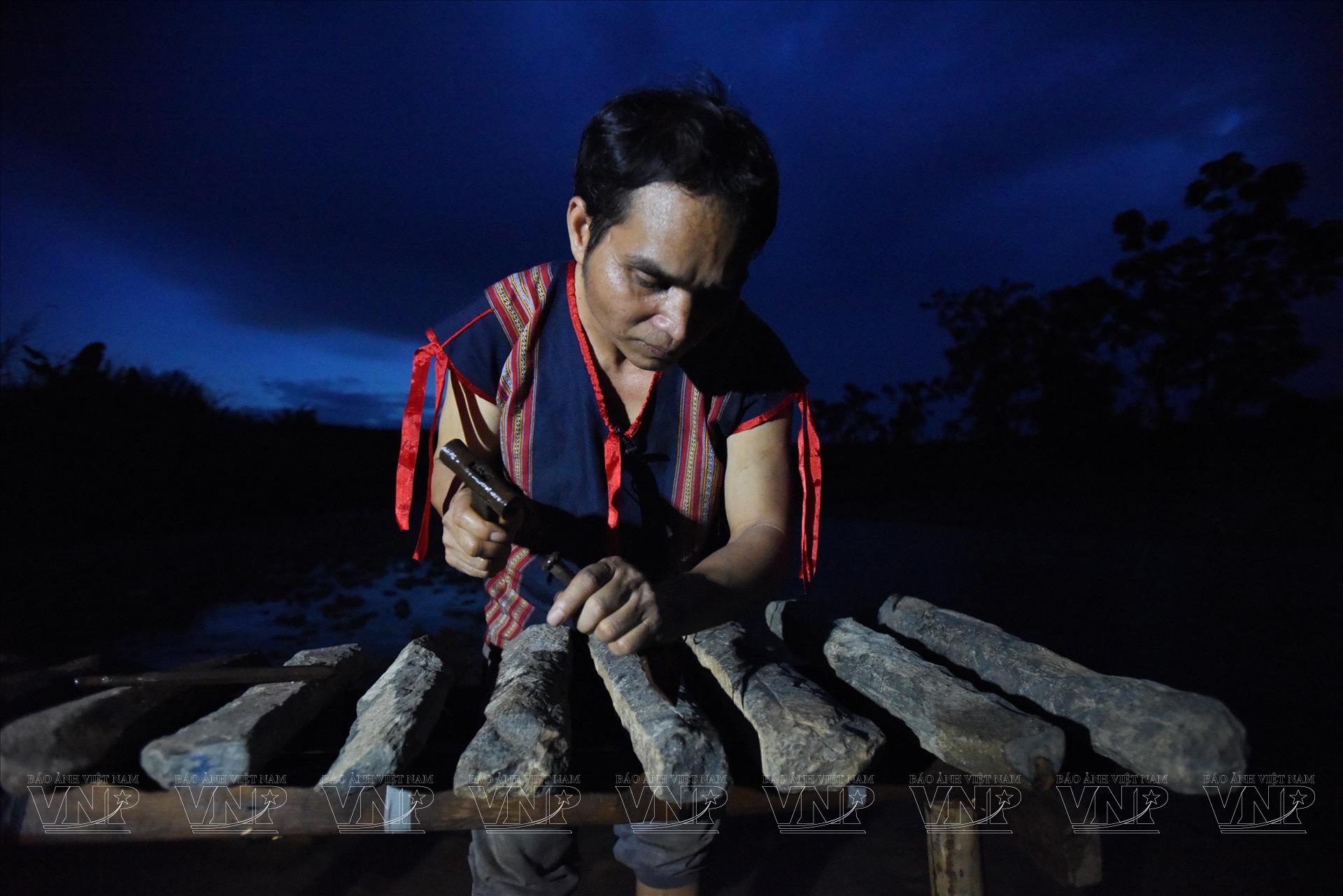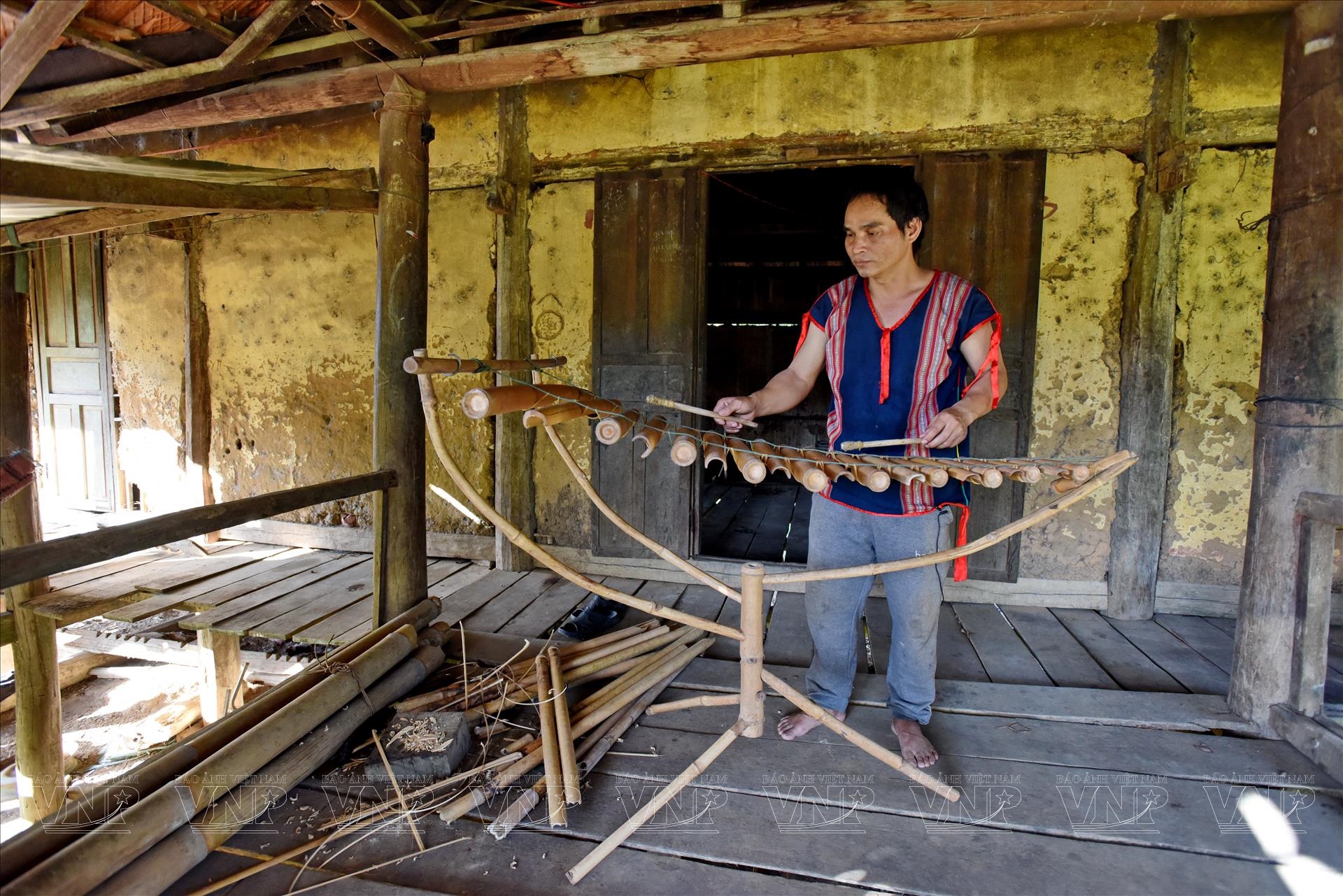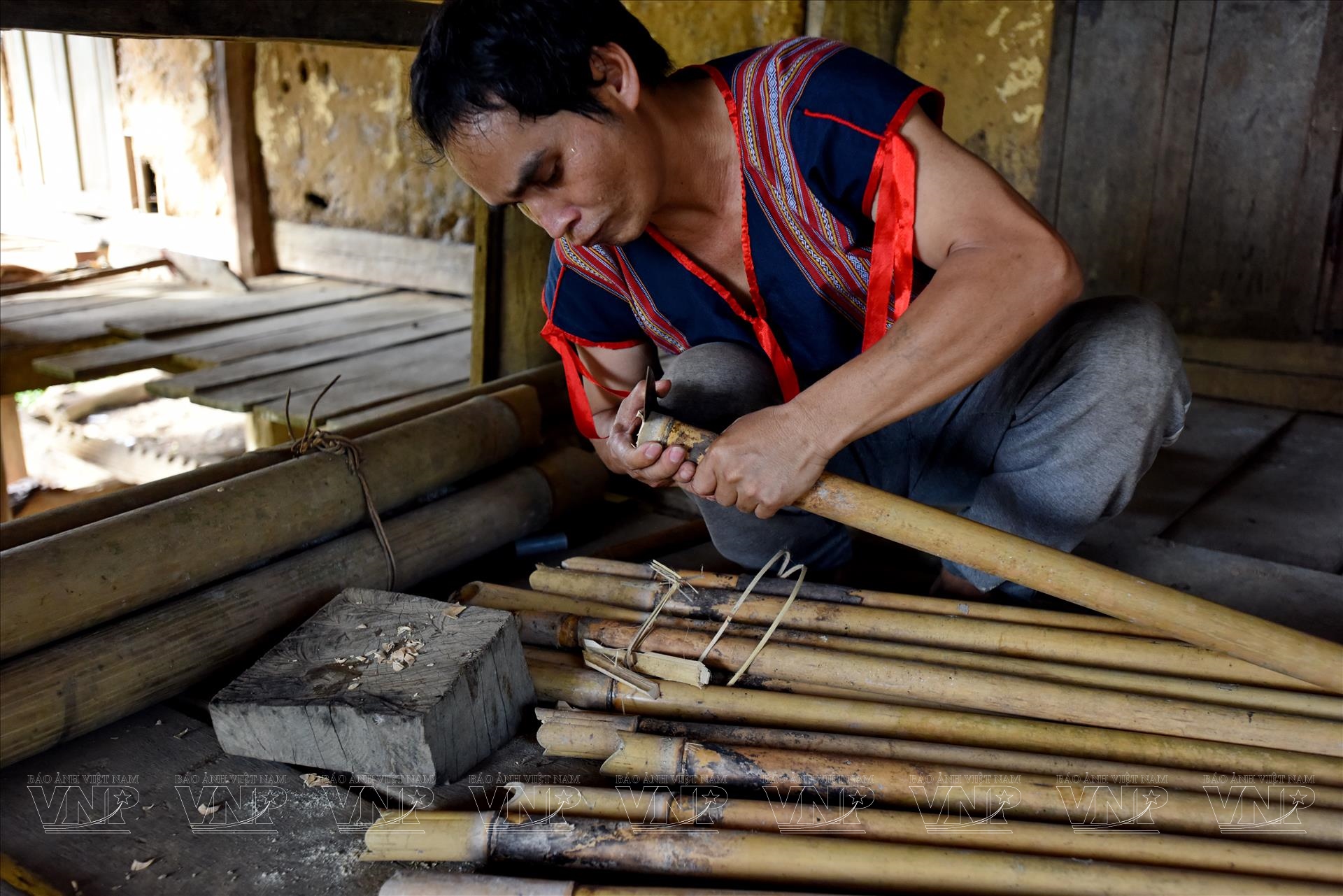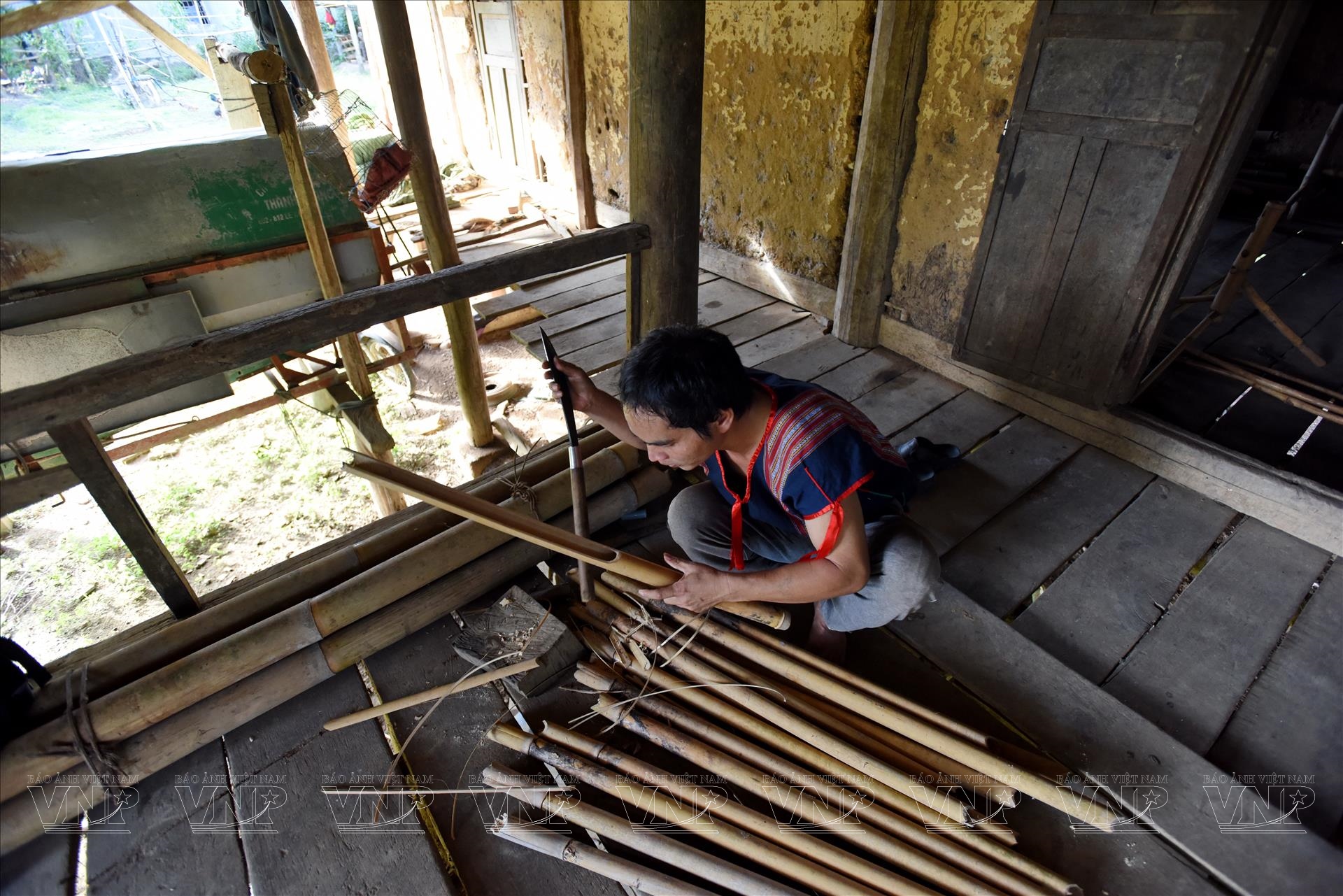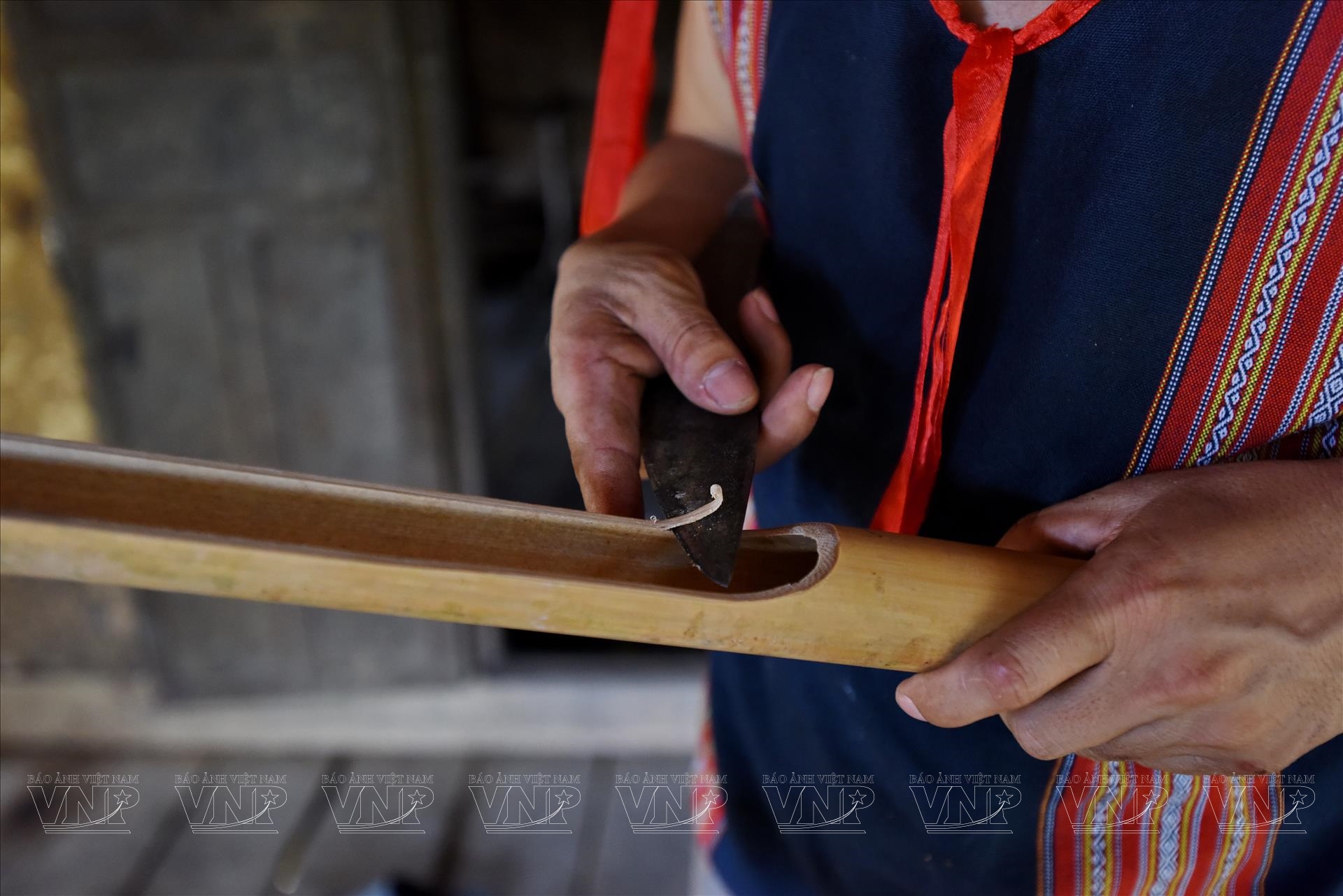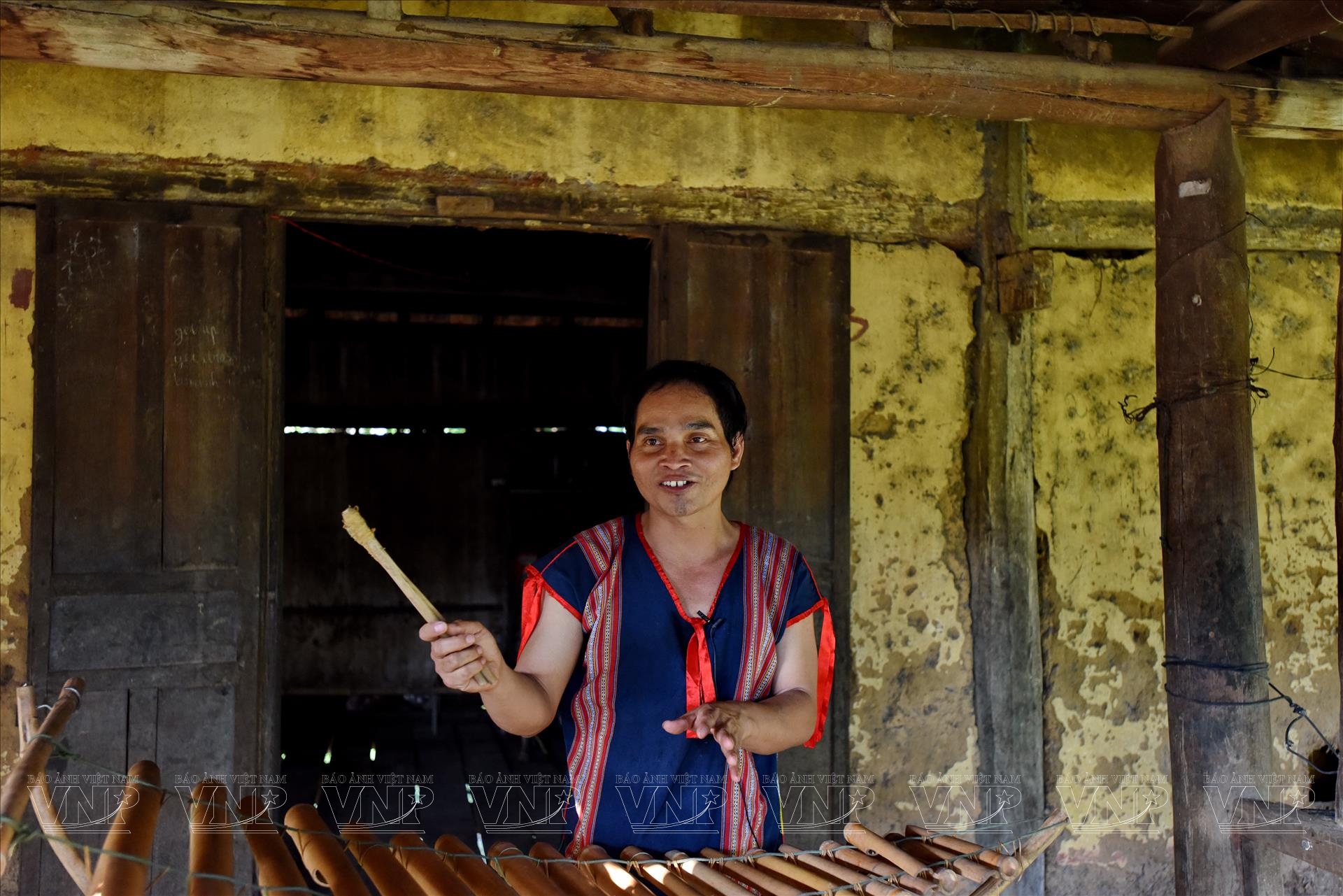A Huynh - A Master of Stone Musical Instruments
A Huynh never attended any music school, nor was he ever taught by anyone. It was simply the sound of T'rung (a traditional bamboo xylophone used in many ethnic groups), ting ning, k’ni and stone musical instruments like an invisible magic that captivated his heart, igniting the flames of passion and guiding him to become a talented young artist proficient in making and playing most of the ancient musical instruments of the Ja Rai.
As the late afternoon descended, the dim light of the mountain forests draped over the Ya Xier stream, now dwindling in the dry season. In the distance, a figure could be seen wading through the shallow stream. Drawing closer, it revealed itself to be A Huynh, searching for stones to craft a new set of stone musical instruments.
Upon seeing someone approach, A Huynh looked up and chuckled, saying, "It's easy to pick up a stone, but finding the right one is the challenge. I've only found this one so far". As he spoke, he presented before me a rough, gray stone, resembling a prehistoric stone axe head. Taking a small hammer, he lightly tapped the stone, producing melodic sounds as if someone were playing a piano.
Stone musical instruments in the Central Highlands are the oldest percussion instruments in Vietnam and one of the most primitive musical instruments. These instruments are made of various stones with different lengths, sizes, thicknesses. Long, large, thick stones produce deep sounds, while short, small, thin stones produce high-pitched sounds. The ancient people believed that the sound of stone instruments was a means to connect the spiritual realm with the human world, between people and the divine, between the present and the past. In 2005, UNESCO included stone instruments in the list of musical instruments in the "The space of the gong culture in the Central Highlands".
Standing amidst the shallow stream, A Huynh carefully arranged a series of stones of varying sizes and lengths, incorporating the newly found stone into the set. As I watched, he gently tapped each stone with the hammer. His hands picked up the pace, tapping faster and faster. Strangely, the rough stones suddenly emitted dreamy tones, reminiscent of distant gongs echoing through the mountain walls.
Born in 1982, A Huynh, a member of the Ja Rai ethnic group, resides in Chot Village, Sa Thay Town, Sa Thay District, Kon Tum Province. In 2015, during the first-ever evaluation for the title of Outstanding Artist in the intangible cultural heritage field, he was awarded the title by President Truong Tan Sang at the age of 33, recognizing his remarkable contributions to preserving and promoting the cultural heritage of the country.
In Kon Tum, and across the Central Highlands, he is present at almost every major festival. Despite his youth, A Huynh has long been a renowned artist in the region, receiving invitations from various places to perform on his traditional instruments.
In addition to playing gongs, A Huynh is also adept at crafting, innovating, and proficiently playing almost all traditional instruments of the Ja Rai. "When it comes to Ja Rai musical instruments, I can handle and play them all. Stone musical instruments, T’rung, ting ning, dinh put, k’ni... I know them all. Sometimes, if I'm busy for a while and don't practice, I might forget a bit, but once I practice again, it all comes back to me," Huynh chuckled.
Apart from his expertise in playing gongs and skillfully handling the T'rung, A Huynh is also known as the only person in Kon Tum who can make and play stone instruments, the most peculiar musical instrument of the Central Highlands people and also the oldest musical instrument.
A Huynh's ability to make and play stone musical instruments was also a matter of chance. Over a decade ago, while passing by a stream, he came across some oddly shaped stones. Out of curiosity, he picked them up and, to his surprise, discovered that they emitted unique sounds when struck, reminiscent of gong music. With a natural inclination towards music and proficiency in playing gongs, A Huynh experimented with carving and adjusting the sound of the stones to match that of gongs. Gradually, he crafted his first set of stone instruments.
Since then, A Huynh has created many different sets of stone musical instruments. His stone musical instruments not only participate in competitions and performances nationwide but also attract the attention of music experts from the Vietnamese Institute for Musicology and the Vietnam Institute of Culture and Arts Studies.
A Huynh speaks little and often has a smile on his rugged face, bearing the typical characteristics of a Ja Rai man from the sunny and windy land of the Central Highlands. His heart burns with the flames of passion, a flame that not only satisfies his deep love for music but also fuels his aspiration to preserve, contribute to, and spread the beauty of his homeland's traditional musical heritage. He is not only passionate about crafting and performing various musical instruments, he is also enthusiastic about teaching the younger generation in his village, always ready to introduce anyone who loves and wants to explore the art of Ja Rai music./.
- By Thanh Hoa/VNP Translated by Hong Hanh
